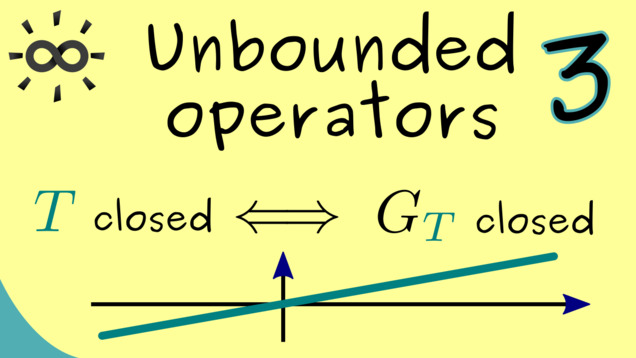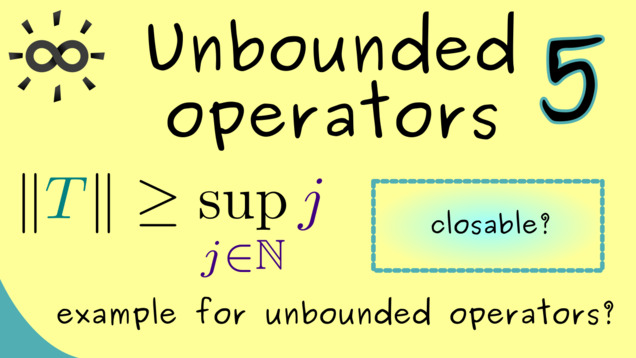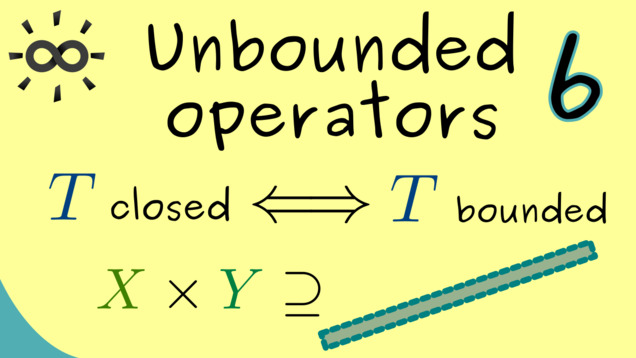Here, you find my whole video series about Unbounded Operators in the correct order and you can choose between the bright and dark version of the videos. I also help you with some text and explanations around the videos. If you want to test your knowledge, please use the corresponding quiz after watching the video. Moreover, you can also consult the PDF version of the video if needed. In the case you have any questions about the topic, you can contact me or use the community discussion in Mattermost and ask anything. However, without further ado let’s start:
Part 1 - Introduction and Definitions
Let’s start with the definition of operators.

With this you now know the definition of the imporant operators in this series. Let’s also state which topics we will cover. Some important bullet points are closed operators, adjoints, spectrum and selfadjoint operators. So in order to understand these things, let’s go more into the general theory of unbounded operators.
Part 2 - Examples
In this video, will first talk about the inverse of an operator, which is also defined for injective operators. However, in this case, the resulting inverse could be an unbounded operator even in the case the original operator was bounded. Moreover, we will look at examples for unbounded operators $ C([0,1]) \rightarrow C([0,1]) $.

Part 3 - Closed Operators
Now, we define a subset of operators. We are mostly interested in so-called closed operators because they carry some nice properties. Note that our bounded operators from the functional analysis series are always closed operators.

Part 4 - Closable Operators
Sometimes the reason that an operator is not closed is just given in the domain. So by increasing the domain, one could make the operator into a closed one. Such operators are then called closable.

Part 5 - Example
Now, we are ready for an explicit example for an operator on an infinite-dimensional space we already know, namely $ \ell^2(\mathbb{N}, \mathbb{C}) $.

Part 6 - Closed Graph Theorem
In this video, we will formulate and prove the so-called closed graph theorem. It roughly says that between Banach Spaces closed operators that are everywhere defined are necessarily bounded. It turns out that this theorem is heavily related to the open mapping theorem* from our functional analysis course.

Part 7 - Graph Norm and Closed Operators
In addition to the different possibilities to describe closed operators from the last videos, we can also use another one. This one needs the so-called graph norm and formulates the closedness of the operator with a completeness of the corresponding graph space.

Part 8 - Adjoint Operators
As one usually does it for bounded operators, one can also define so-called adjoints for unbounded operators. This happens in the Banach space setting and similarly in the Hilbert space setting. However, we really have to put the domains of the operators in the focus.

Part 9 - Extension and Restriction for Adjoints
Let’s talk about how the domain changes for the domain of the Banach space adjoint and the Hilbert space adjoint if we change the domain of the orignal operator.

Part 10 - Adjoint of Multiplication Operator
Let’s look at a special case of operators to see how we can calculate the adjoint operator.

Summary of the course Unbounded Operators
- You can download the whole PDF here and the whole dark PDF.
- You can download the whole printable PDF here.
- Ask your questions in the community forum about Unbounded Operators.
Ad-free version available:
Click to watch the series on Vimeo.